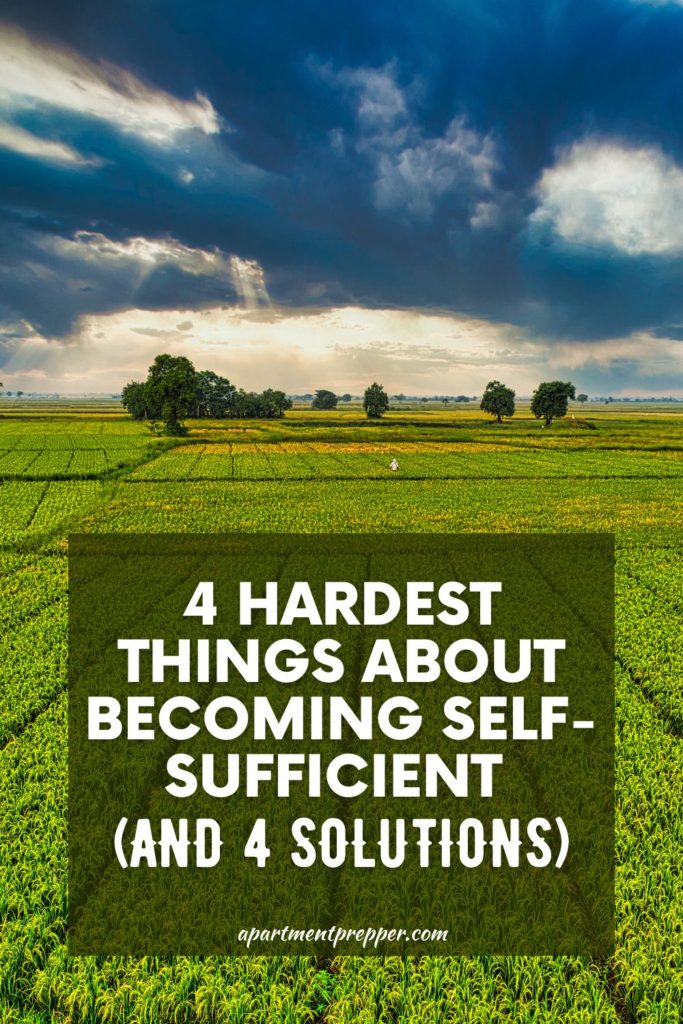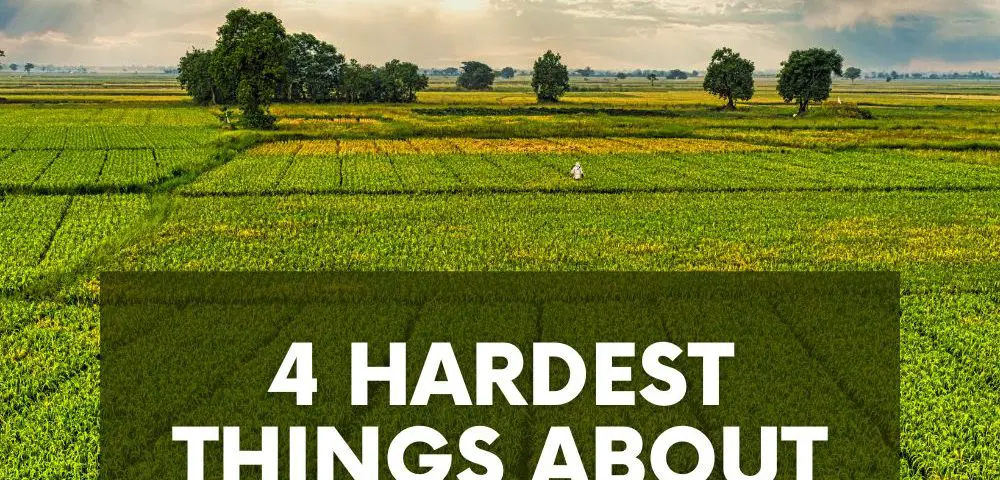Written by Martin Banks
Modern life in the developed world means being sufficient on goods and services from outside your home or homestead. Electricity comes from the local grid. Water comes from the city’s pumping plant if you live in a city.
Food and other necessities are shipped to your local grocery store. You take a trip to the doctor’s office or the hospital if you’re injured or sick. We spend so much time relying on others that the idea of being self-sufficient is often out of reach.
What are the most challenging things about becoming self-sufficient and how can we overcome those challenges?
Define Self Sufficiency
Becoming self-sufficient is never easy, but understanding the definition of self-sufficiency can make this challenge a little easier to overcome. The dictionary defines self-sufficiency as “needing no outside help in satisfying one’s basic needs.” When it comes to building a homestead, it’s a bit more complicated than that.
Becoming self-sufficient means producing all your food, staying debt-free and being able to live off the grid while providing everything that you, your family and your animals need. It also requires a certain amount of mental fortitude to face all the challenges that might arise because true self-sufficiency means only relying on yourself or the community that you’ve built up around yourself.
They say that no man is an island, which is true for self-sufficiency. The goal here isn’t to cut yourself off from humanity but to stop relying on big corporations and companies when you can do everything you need close to home. It sounds simple, but it isn’t always easy.
Hardest Things About Becoming Self Sufficient
Self-sufficiency isn’t easy, but some aspects can be more challenging than others.
1. Power
When most people hear the phrase ‘going off the grid,’ they often picture themselves disconnecting from local city-run utilities and becoming entirely self-reliant. Solar or wind energy are the most common alternatives, but they aren’t always an option.
If shunning all modern technology in favor of a more simplistic or traditional type of living isn’t in the cards, you’ll need to figure out a way to keep your home and devices powered without relying on the local grid.
2. Water
Water is essential for life. Most of us don’t think twice about turning on the tap or relying on the local water supply. If you rely on well water in your home, you’re already one step closer to becoming self-sufficient, but that isn’t an option for most of the country.
3. Food
Food is often the most significant challenge when it comes to becoming self-sufficient. We’re so used to going to the grocery store when we need to restock our fridge or pantry that the idea of doing anything differently can be downright foreign.
In this case, being self-sufficient means providing for your needs, including proteins, vegetables, grains and everything in between. There will be some things that you might not be able to create yourself, like salt or certain spices, but beyond that, you need to be able to raise or grow your food supplies and prepare them for long-term storage.
4. Money
Being self-sufficient doesn’t mean that you won’t need money. You can own your home and property and still need to pay property taxes. The world still revolves around those little green pieces of paper. A self-sufficient household is ideal, but if the house burns down or your furnace explodes in winter, you’ll want to ensure that you have some way to take care of yourself or your family.
Self Sufficiency Solutions
What does it take to overcome these challenges and become genuinely self-sufficient?
Green off-grid energy is the best choice for power if it is functional in your area. Installing solar panels, wind turbines or other power generators can help meet your power needs. If you don’t live in an area where these are an option, consider looking for green energy or off-grid co-ops. These co-ops are already helping bring reliable power to rural areas in the United States.
Many of these towns rely on a single high-voltage line to connect them to the local grid. If that line is damaged or downed, the entire town can lose power for days or weeks. Co-ops allow these spaces to be more self-sufficient while they wait to be reconnected.
Wells are the best option for off-grid water. Make sure you know how to fix your pump if it breaks or have a manual backup that will allow you to pump water up from the ground if the power fails or the motor breaks down. Rain capture and natural water sources also help keep you hydrated. Ensure you have a way to purify your water sources if you’re relying on rain or local rivers and lakes.
There are many different ways to make your food intake more self-sufficient. Start by planting an organic garden and expanding it every year. Learn the art of canning to preserve your harvest without relying on electricity or taking up freezer space.
Learn how to eat seasonally, so you do not depend on produce shipped in from the far corners of the world. For protein sources, if you’re not planning to follow a vegan diet, you can raise your livestock or hunt when animals are in season. Deer, for example, is a fantastic lean protein but is only available during limited hunting seasons throughout the year.
When it comes to money, creating a self-sufficient homestead means getting rid of your debt and focusing on living within your means. You don’t have to quit your job to become self-sufficient, but if you don’t like working for someone else, consider becoming an entrepreneur or starting your own business.
Taking Care Of Yourself
Becoming self-sufficient isn’t easy, nor is it something that will happen overnight. If this is your ultimate goal, make a plan to overcome these challenges and help you build the self-sufficient homestead of your dreams.
About the author
Martin Banks is the managing editor at Modded. Follow him on Twitter @TModded for frequent updates on his work.
We are an affiliate of Amazon.com, which means we received a small commission if you click through one of our Amazon links when you shop, at totally no cost to you. This helps keep the lights on at the blog. Thanks!



One comment